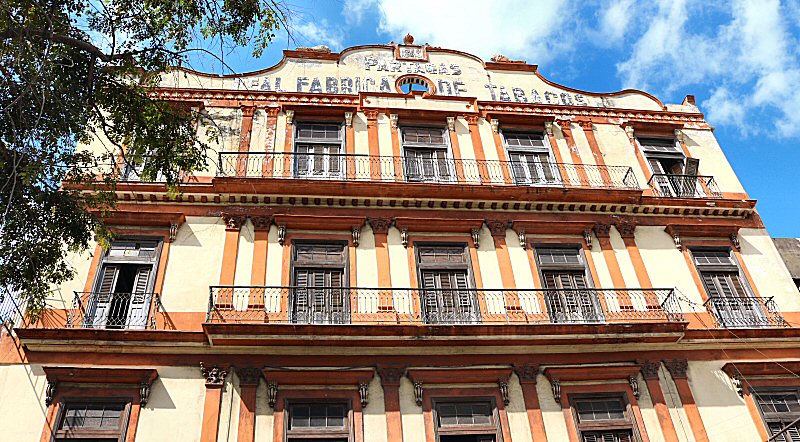


When the Catalan Jaime Partagás y
Ravelo (Rabell) migrated to Cuba in 1831, he was merely a
teenager, 14 years old, but he had many brilliant ideas about
his new life. Soon, he started to work for the businessman Joan
Conill in Havana.
The Joan Conill y Pig was also a
Catalan that had arrived in Cuba in 1817. He was born in France,
but his family was originally from Barcelona. He had
established the first tobacco store in Old Havana, dedicated to
the export of this product. He was manufacturing the tobacco
that was cultivated in his farms and selling them under the
brand name Alianza. Joan Conill was also a banker, regidor
(alderman) in the city council and founder of the La
Chorrera Oil refinery. The charitable Joan Conill was known in
helping to a number of Catalans, initiating them in business and
supporting them in standing on their own two feet.
Jaime Partagás learned everything about
tobacco from working with Joan Conill. Then he started to work
as torcedor (cigar twister) for the Asturian Francisco Alvarez
Cabañas that had a cigar trading license since 1817. He was
marketing his cigars under his own brand Cabañas. Here, Jaime
Partagás developed his knowledge about cultivation, curing,
transportation, storage, exportation, production and trade of
tobacco. His ambition led him to establish his own factory, La
Flor de Tabacos de Partagás (the Tobacco Flower of Partagás) in
1838. Initially, it was a small and unimportant store at the
intersection of the Industria and the Barcelona streets, behind
the current Capitolio, but he went ahead by moving the factory
to a warehouse on the Cristina street #1 and establishing the
Real Fábricas de Tobaco Partagás (Royal Tobacco Factory
Partagás) in 1845. He might have used the word Royal to
emphasize that his products were appealing to the taste of the
cream of the society of Europe and Asia. His own brand Partagás
emerged around these years. Gradually, he expanded the business
here. With the money he had spent, and the support of his wife
Catalina Puig, he moved the factory to a beautiful
colonial-style building on the Industria street #520 in 1850.
Jaime Partagás was very successful in
choosing the plantations where the finest tobacco could grow, so
that he bought many plantations in the island incisively,
including many of the best plantations in Vuelta Abajo. Vuelta
Abajo, located west of Pinar del Rio, is the finest
tobacco-growing land on the world. Hato de Santa Cruz, a land of
8 square kilometers close to Consolacion del Sur, was one the
best plantations in Vuelta Abajo. Jaime Partagás bought it in
1853. He managed all his plantations through tenants that he
attended.
Jaime Partagás also revolutionized the
manufacturing of tobacco by being the first to make experiments
on cigar fermentation and ageing methods to preserve the
quality. His efforts made the brand Partagás incredibly
successful. He hired one of the first lectors with the mission
to read aloud the newspapers and some novels to the employees
(cigar twisters), when they worked.
When he was building his Partagás
empire, he made a lot of enemies also, not only because of his
addiction to women, but also because he was a successful Cuban
cigar brand owner.
In 1848, Manuel Gonzales-Carvajal, the
son-in-law of Francisco Cabañas, accused Jaime Partagás of
stealing the well-known brand name Cabañas by launching the new
brand La Flor de Cabañas of Partagás y Compañía to the market,
as the similarity of the names was creating confusion,
particularly in the British market, where the Cabañas brand had
been well known since a long time.
The case was brought into the court and
the trial lasted for five years. According to the judicial
sentence, the act of Jaime Partagás was defined as infringement
and he was sentenced to abandon his brand and to pay to Manuel
González-Carvajal for his loss on the market. However, the
publicity generated by the trial widely led to associate the
name Partagás with the Cabañas brand, so that Jaime Partagás
turned the lawsuit into advantage by persuading Manuel Gonzales-Carvajal
to establish the brand La Flor de Tabacos de Partagás y Cía (the
Tobacco Flower of Partagás Inc.) in 1853.
He had also some conflicts with the adjoining landowners. One of them, Pedro Mato, accused Jaime Partagás of encroaching his land and the court acknowledged Pedro Mato to be right. Jaime Partagás was blamed of offering large loans to farmers in the region at extortionate rates, of buying up their crops before the harvest at advantageous prices, and of supplying them with seeds and equipment from his own warehouses with the sole purpose of putting them so deep into debt that they would have to sell their land and come work for him. Furthermore, Jaime Partagás was accused of making habit of having sexual intercourse with his slaves in his plantations. The land disputes with his neighbors put Jaime Partagás’ head in a noose. In 1868, Jaime Partagás was shot close to Hato de Santa Cruz and died one month later. One of his employers of his farm was sentenced of admitting the crime, whereas his adjoining neighbor, motivated by revenge, was sentenced of having instigated the murder.